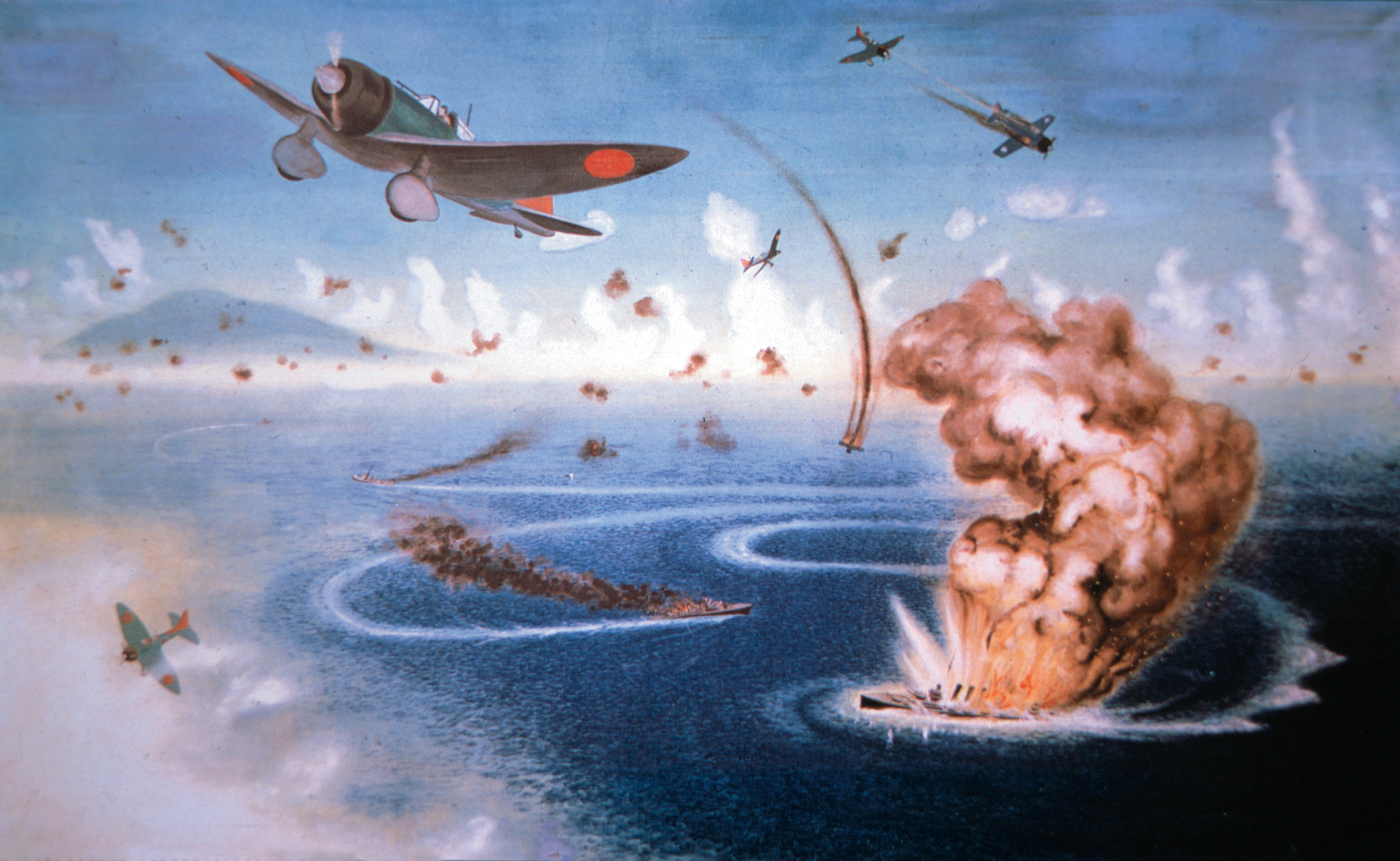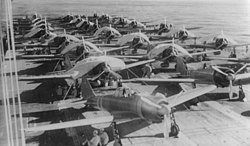Memorial Day Special: The Battle of the Coral Sea and its Incredible Impact

When we re-examine major events in history sometimes truly significant occurrences can be overlooked and so it is with the Battle of Coral Sea. All we hear about is the Battle of Midway, which in itself was a major turning point in the war of the Pacific with Japan, but the prelude to Midway was the Battle of The Coral Sea that if lost by the allies would have meant the capture of Papua, New Guinea and the loss of Port Moresby in Australia. That would have isolated two major strategic points that would have bottled up much of the south Pacific in favor of the Japanese Imperial Navy!

Undetected
In preparation for major amphibious landings, the Japanese had not spotted the location of the two American carriers that were awaiting the enemy, setting a trap. During the American Civil War both the Union and Confederate Armies were often characterized as two blind bears waiting to stumble into each other and in May of 1942 so it was with the US Navy and the Japanese Imperial fleet. In the dark hours before dawn both carrier forces were within striking distance of each other but were unaware of each other’s presence. Only 70 miles away from each other at one point!

Historic engagement
When the first rays of morning light hit the Pacific, all hell broke loose once the carrier forces detected each other’s position. The Battle of the Coral Sea marks the first time in history that two opposing navies fought without sighting each other’s ships or without salvos from battleships being exchanged. This would be the first series of sea launched aerial attacks that would prove the telling tactics that would decide the outcome of World War II in the Pacific theater.

The hunt was on
From May 4th thru May 8th carrier operations and attacks by dive bombers, torpedo planes, and fighters from both sides carried out their missions, but opportunities were lost based upon bad weather, poor visibility, and poor reconnaissance. Not only the Japanese but the Americans had prime opportunities and superior position only to fail to capitalize. Even with Task Force 17 under Admiral Fletcher informed of the Japanese intentions by the deciphered radio communications by Naval Intelligence, still confusion reigned. Admiral Yamamoto had earmarked 6 carriers for the troop landings on Tulagi Island, Papua, and Port Moresby while hunting down the American task force. Admiral Takeo Takagi, Commander of the Japanese carrier group was confident that if he could just locate the Americans he could defeat them, but he was unsure of the size of Fletcher’s force as well.

First Blow
First blood was drawn when a single US carrier struck the Japanese landing on Tulagi! In the midst of refueling the Japanese were caught without air cover and suffered considerable losses! This gave the Japanese a general idea of where the Americans might have struck from so they launched their sea planes to find Task Force 17 and launch an attack. Once again cloud cover and inaccurate reconnaissance plagued both sides anxious to launch strikes. The US forces were outmatched in sheer numbers as the only two other US carriers the Enterprise, and Hornet were across the Pacific returning from the Doolittle Raid while the Saratoga was being repaired for damages suffered in prior action.

Missed opportunity
With radar still in its infancy Task Force 17 missed incoming Japanese attacks that would have been intercepted more effectively. Missing the main US fleet and spotting the Neosho, an oiler and the Destroyer Sims to the south of the US main force, the Japanese struck back sinking both ships and taking the lives of US sailors, but they’d misidentified minor ships as the US carrier group, and returned empty handed. Ironically both Neosho and Sims were survivors of the Pearl Harbor attack.

The carrier duel!
Finally Admiral Fletcher knew where the Japanese main fleet was and as US dive bombers, torpedo planes, and fighters were launched, so were the Japanese doing the same! The US aerial forces concentrated on only one carrier while the Japanese struck both the Lexington and the Yorktown. With Carrier Lexington taking a 500 pound bomb deep down into 6 decks along with a 1,000 pound bomb secondary explosions occurred hours later that caused out of control fires spreading throughout the ship! Lexington was unrecoverable and the order to abandon was given. 216 US sailors lost their lives! Although Yorktown was damaged her capacity to operate was not compromised! Lexington was scuttled leaving only one US carrier.

Task Force 17 hits back
The US dive bombers and torpedo planes inflicted the sinking of light carrier Shoho while damaging Carrier Shokaku and forcing her to retire from further action! Three Japanese auxiliary ships were also sunk by US warplanes. In the confusion as night fell three Japanese planes attempted to land on US Carrier, Yorktown, thinking it was one of their own and quickly scattered after anti-aircraft batteries opened up on them! Although some might have given the battle a tactical victory to the Imperial Japanese Navy, the strategic victory was won by the Americans with more casualties inflicted, loss of aircraft, and the disruptions of their planned amphibious landings that would be recalled and delayed.

The implications of the Coral Sea Battle
The Japanese were already attacking Wake Island, Guam, the Gilbert Islands, Singapore, Hong Kong, and Malaya as the Battle of Coral Sea was being decided. The Japanese had lost the initiative and been too conservative while Fletcher’s Task Force 17 had also failed to locate their enemy soon enough to inflict more losses, but Japanese ambitions to cut off Australia and New Guinea were frustrated, and this would prove a major step toward the Battle of Midway just a month later!
- Losses for the Japanese as follows:
- Carrier Shoho sunk
- Battle Cruiser Kikuzuki sunk
- 3 Auxiliaries sunk
- 77 warplanes shot down
- 90 aircrew lost
- 1,074 Men Killed in action
- 13,900 shipping tons lost
- Losses for the US Naval Fleet as follows:
- Carrier Lexington sunk
- Oiler Neosho sunk
- Destroyer Sims sunk
- 66 US Aircraft lost
- 35 Air crewmen killed in action
- 543 US sailors and officers killed in action.
- Shipping tonnage lost-62,600 tons

"Destroying the New World Order"
THANK YOU FOR SUPPORTING THE SITE!
Latest Activity
- Top News
- ·
- Everything
Memorial Day Special: The Battle of the Coral Sea and its Incredible Impact
Trump Just Wrecked South Africa...
What's in Macron's hand? Cocaine bag?
The Vampires of Washington DC
How to make a modern heating stove that millions of people do not know
PFIZER-GATE verdict - A resounding Slap in the Face for Ursula von der Leyen
Strange Horror Story (Told in First Person)
James Comey appears to call for the assassination of President Trump
© 2025 Created by truth.
Powered by
![]()
You need to be a member of 12160 Social Network to add comments!
Join 12160 Social Network